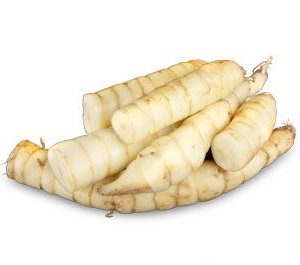Spaghetti squash is a type of winter squash that possesses an uncanny resemblance to spaghetti noodles when cooked, hence its name. It’s cylindrical, measuring around 12 inches in length and 6 inches in diameter, with a weight ranging between 2 and 3 pounds.
Although spaghetti squash may not taste exactly the same as pasta, its mild flavor and spaghetti-like texture still make it a good companion for a wide variety of flavorful sauces like marinara and curry. It can also be added to various dishes, such as soups and stews.
When buying spaghetti squash, choose one that has a firm rind, with no bruises or soft spots. The color of its rind may range from creamy white to pale yellow to orange, and some are patterned, too. Orange-colored squashes are the best choice, as they have higher beta-carotene content. You can store spaghetti squash at room temperature for up to three weeks.
Health Benefits of Spaghetti Squash
Spaghetti squash is a good source of the B vitamins riboflavin, niacin, pyridoxine and pantothenic acid, which act as “critical cofactors for axonal transport, excitability of neurons, synthesis of neurotransmitters and numerous cellular metabolic pathways.”
Folate is also found in this bright-colored vegetable. This vitamin helps support the formation and development of new cells and may help reduce the risk for birth defects, making spaghetti squash an ideal food for pregnant women. It may also help regulate homocysteine metabolism and promote cardiovascular health.
Potassium, a mineral that helps maintains proper muscle and nerve function, is present in spaghetti squash, making it beneficial for people with high blood pressure. Manganese, a mineral that plays a role in bone and tissue health, metabolism and immune response, is another key component in this gourd.
Spaghetti squash contains the essential minerals calcium, iron, phosphorus and zinc. Check out the table below to learn more about its nutritional value:
| Spaghetti Squash Nutrition Facts
Serving Size: 3.5 ounces (100 grams), raw |
||
| Amt. Per Serving |
||
| Calories | 31 | |
| Total Fat | 0.57 g | |
| Saturated Fat | 0.117 g | |
| Trans Fat | ||
| Cholesterol | 0 mg | |
| Sodium | 17 mg | |
| Total Carbohydrates | 6.91 g | |
| Dietary Fiber | 1.5 g | |
| Sugar | 2.76 g | |
| Protein | 0.64 g | |
| Vitamin A6 mcg | Vitamin C | 2.1 mg |
| Calcium23 mg | Iron | 0.31 mg |
Studies on Spaghetti Squash
A study published in the International Journal of Science and Research analyzed the seed extract of spaghetti squash in different solvents to determine its antimicrobial activity and found that it may help inhibit Pseudomonas aeruginosa, Proteus vulgaris, Staphylococcus aureus and E. coli bacterial strains.
Results showed that the “species, strains and concentrations of spaghetti squash extract” may influence the sensitivity of the tested pathogenic microbes. The researchers also concluded that the seed extract of spaghetti squash contains “potential antimicrobial components that may be of great use … as a therapy against various diseases.”
Spaghetti Squash Fun Facts
Both pasta and spaghetti squash have low amounts of fat, salt and fiber. However, pasta contains 158 calories and about 31 grams of carbohydrates for every 100-gram serving, which could put your health at risk if consumed excessively. In contrast, spaghetti squash has only about 31 calories at the same serving size, is rich in protein and has a lower carb content, making it a better option for your health.
Another way to make spaghetti-like noodles from spaghetti squash is through boiling. All you need to do is heat a pot of water large enough to hold the entire spaghetti squash. When the water is boiling, put the squash in the pot and allow it to cook until fork-tender. Once cooked, cut the squash in half and remove the seeds. Using a fork, separate the strands to achieve the same form as pasta.







Reviews
There are no reviews yet.